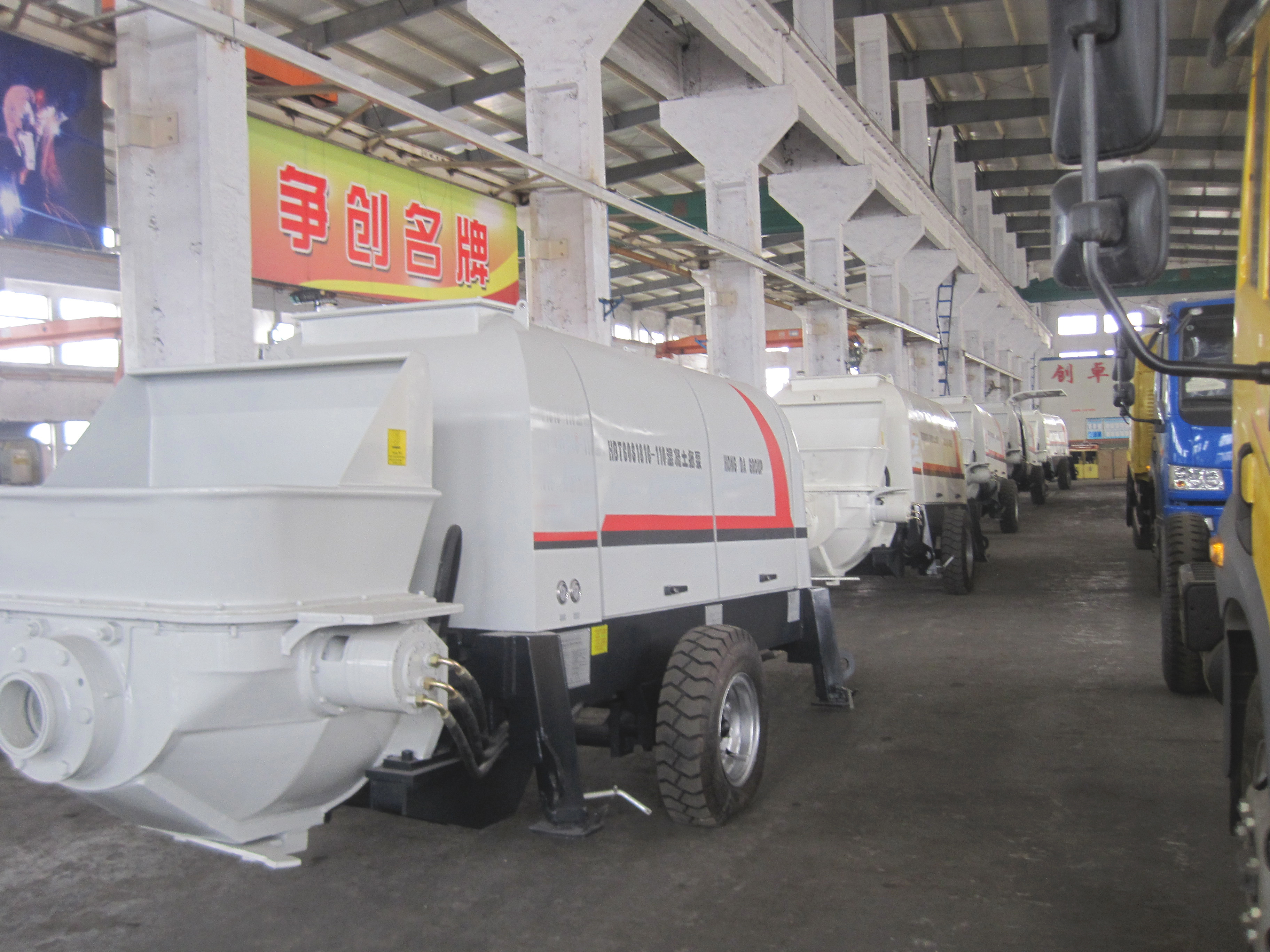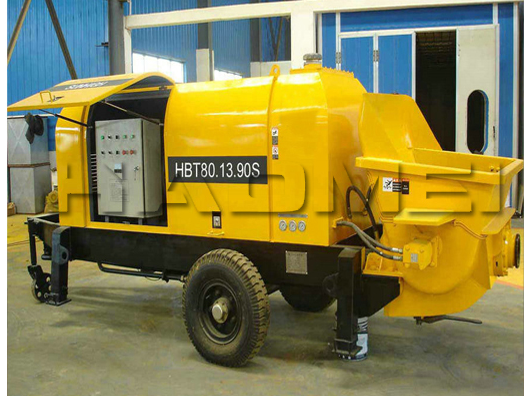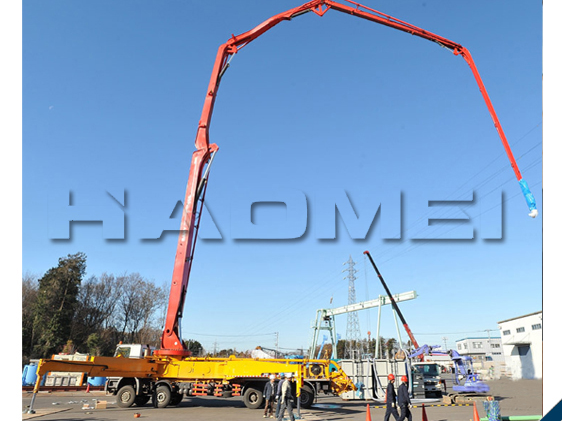
A concrete pump has the following main technical parameters: delivery displacement, outlet pressure, motor power and distribution valve form. According to the new national standards, these main parameters are known from the model of the concrete pump.
Finding a concrete pump that fits your needs is essential to completing jobs quickly and efficiently. Whether you work in residential or commercial areas, there are various factors to consider before investing in a machine. Here are eight tips for buying a new concrete pump.
Choosing the right concrete pump is crucial for the success of your construction project because it can significantly enhance efficiency, reduce labor costs, and ensure precise concrete placement. Continue reading about the essential considerations for buying a concrete pump so you can get the most bang for your buck.
Understanding Concrete Pumps
Concrete pumps are specialized machines that transfer liquid concrete from a mixing truck to a desired location on a construction site. There are two main types of concrete pumps:
Boom Pumps: Featuring a remote-controlled articulating robotic arm (boom), they are ideal for large-scale projects and those requiring concrete placement at significant heights or distances.
Line Pumps: These concrete pumps use flexible or rigid pipelines to transport concrete to the placement site. They are versatile and suitable for smaller projects, such as residential construction or renovations.
Assessing Your Project Needs
Before purchasing a concrete pump, evaluate your project’s specific requirements. Start by determining the overall scale of your project to select a pump that can handle the required workload efficiently. Next, estimate the total volume of concrete needed for your project to ensure the pump can deliver the necessary output. Finally, assess the distance and height from the pump’s location to the placement site to help you decide between a boom pump and a line pump.
Types of Concrete Pumps
Boom Pumps
High precision and control over concrete placement
Suitable for high-rise buildings and large infrastructure projects
Reduces labor costs by minimizing manual concrete handling
Line Pumps
Versatile for various project sizes
Easy to maneuver in confined spaces
Cost-effective for smaller projects such as renovations
Key Features to Look For
Pump Capacity
The capacity of a concrete pump determines how much concrete it can deliver per hour. Match the pump’s capacity to your project’s requirements to ensure efficiency and avoid delays.
Reach and Flexibility
Consider the reach and articulation of boom pumps or the length and flexibility of line pumps to ensure they can access all areas of your job site.
Power Source
Concrete pumps can be powered by diesel or electric engines. Diesel pumps offer greater mobility and power, suitable for large outdoor projects. Electric pumps are quieter and more environmentally friendly, ideal for indoor or residential projects.
Cost Considerations
The upfront cost of a concrete pump can vary significantly based on the type, model, and brand. Boom pumps are typically more expensive than line pumps due to their advanced features and greater reach capabilities. While the initial purchase price is important, it should not be the sole determinant in your decision-making process.
Consider the cost of spare parts, routine servicing, and potential repairs. Pumps from well-known brands may have higher initial costs but offer lower maintenance expenses due to better build quality and greater availability of parts.
All construction equipment depreciates over time, but some pumps hold their value better than others. Factors influencing depreciation include brand reputation, condition, and market demand. A well-maintained pump from a reputable brand can have a higher resale value.
Safety Features
Safety is paramount in concrete pumping operations. Look for pumps with essential safety features, such as emergency shut-off systems and pressure relief valves. Ensure operators receive proper training and certification before using them on the job site.
Where to Buy Concrete Pumps
When purchasing a concrete pump, selecting the right vendor is as crucial as choosing the appropriate model. There are many factors to consider before buying a concrete pump, and you can choose to purchase from local dealers, at auctions, directly from manufacturers, or through online marketplaces.
Local Dealers and Distributors
Local dealers and distributors are often the first choice for many contractors and construction firms because they take a hands-on approach, allowing you to inspect the equipment closely. Additionally, buying from local dealers ensures easy access to after-sales support, including maintenance, repairs, and spare parts.
Online Marketplaces
E-commerce has made it possible to purchase concrete pumps from online marketplaces. Online platforms often have a broader selection of concrete pumps, including various models and brands, allowing you to compare features and prices easily. They also allow you to view customer reviews and ratings and browse and purchase equipment from the comfort of your office.
Auctions
Auctions can offer substantial discounts, making them a cost-effective option. However, you need to thoroughly inspect the concrete pump and understand its history before making a bid. When possible, check for signs of wear, rust, and any mechanical issues and ensure all components are in working order.
Manufacturer Direct
Some manufacturers offer sales to customers and purchasing directly from a manufacturer gives you access to the latest models and technologies. Manufacturers often provide comprehensive warranties and robust customer support, and a direct purchase may also allow for customization options.
Choosing the right concrete pump is essential to keep your construction project running smoothly and efficiently. By assessing your project needs, understanding the types of pumps available, and considering key features and overall costs, you can make an informed decision before buying a concrete pump.
The motor power of a concrete pump is the precondition for determining the outlet pressure and the delivery volume. When the motor power is constant, the increased pressure will reduce the delivery volume; on the contrary, reducing the outlet pressure will increase the delivery volume. In order to ensure that the concrete pump has a large conveying capacity, and can have a certain outlet pressure with the matching economic power, in the design of the concrete pump, most of the constant power piston pump is used; that is, the constant power value After the selection, when the outlet pressure rises, the output displacement of the oil pump will automatically decrease, reaching the value corresponding to the power design; if it is necessary to achieve high outlet pressure, and customer want to obtain a large amount of transportation.
The only way is to increase the motor power. Therefore, in the new national standard, the concept of capacity index of concrete pump (measured in MPa•m3/h) is quoted; Which is the product of the actual outlet pressure of the concrete pump and the actual delivery volume per hour. The higher the capacity index, the higher the power of the motor, thus achieving the goal of large displacement and high lift. So if you need a concrete pump, we are pleased to give you professional suggestions.
There is no lowest price, only lower price. You get what you pay for. We hope you are looking for the perfect working performance of the equipment, not the low-priced inferior goods. Haomei only provide our clients with high quality machines. Wish a cooperation with you in the future.











02 Comments
Lorem ipsum, dolor sit amet consectetur adipisicing elit. Dicta perferendis asperiores voluptatum saepe repellat atque obcaecati dolores nulla, explicabo harum inventore sed corrupti molestiae aspernatur.
Lorem ipsum dolor sit amet consectetur, adipisicing elit. Qui expedita magnam ea tempora consectetur fugit dolorum numquam at obcaecati voluptatibus.
Lorem, ipsum dolor sit amet consectetur adipisicing elit. Error, ipsa dolor exercitationem culpa obcaecati illo veniam voluptatem perferendis hic nisi tempora omnis, mollitia unde doloribus.